EXAM 3 OUTER PLANETS
1/32
Earn XP
Description and Tags
These flashcards cover the key concepts and information regarding the physical and atmospheric properties, history of exploration, and significant features of Jupiter.
Name | Mastery | Learn | Test | Matching | Spaced |
|---|
No study sessions yet.
33 Terms
What was the purpose of the Voyager 1 mission?
What it is:
Space probe launched in 1977 to study outer planets and interstellar space.
Purpose/Goal:
Explore Jupiter and Saturn; continue into interstellar space.
Achievements:
First spacecraft to reach interstellar space (2012).
Appearance:
Golden record attached; long antenna and instruments.

What planets did Voyager 2 visit and what was its mission goal?
What it is:
Twin probe to Voyager 1, launched 1977.
Purpose/Goal:
Voyager 2 is the ONLY spacecraft to visit Uranus and Neptune; also flew by Jupiter and Saturn.
Achievements:
Studied all four outer planets and their moons.
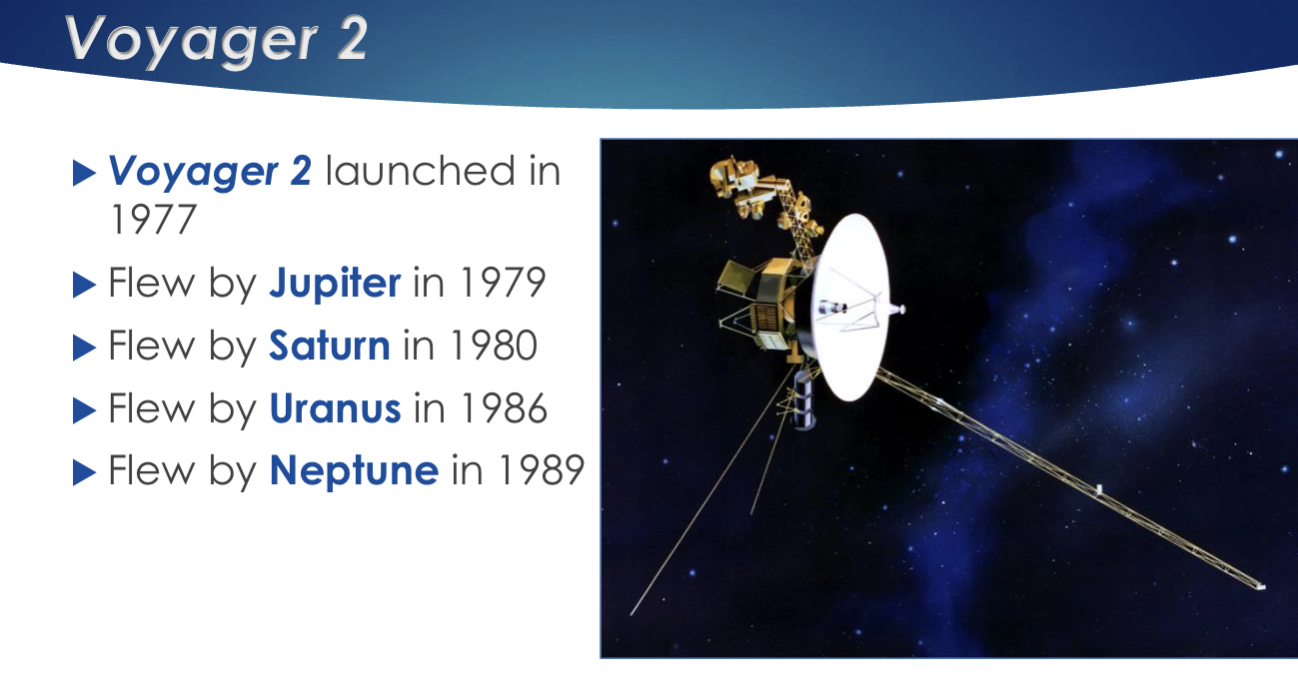
What was the Galileo spacecraft’s mission and main discoveries?
What it is:
An Orbiter and probe sent to Jupiter (launched 1989, arrived 1995).
Purpose/Goal:
Study Jupiter’s atmosphere, magnetosphere, and moons.
Discoveries:
Found Evidence of an ocean inside Europa; and volcanic activity on Io.
What is the main goal of the Juno mission to Jupiter?
What it is:
An Orbiter launched in 2011, arrived 2016.
Purpose/Goal:
Study Jupiter’s interior structure using Microwave Radiometer (MWR), gravity, magnetic field, and auroras.
Appearance:
Solar-powered, polar orbit for global coverage.
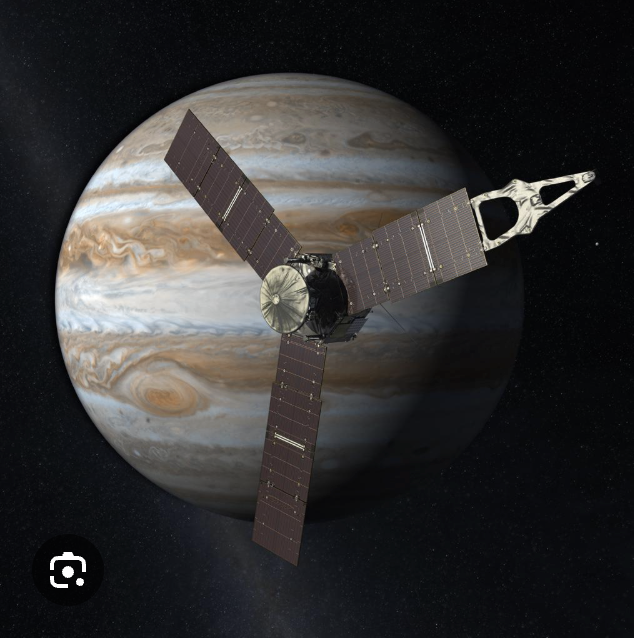
What were the objectives of the Cassini mission to Saturn?
What it is:
Orbiter launched 1997, arrived 2004.
Purpose/Goal:
Study Saturn, its rings, and moons.
Key Events:
Released the Huygens probe; ended in 2017 by plunging into Saturn.
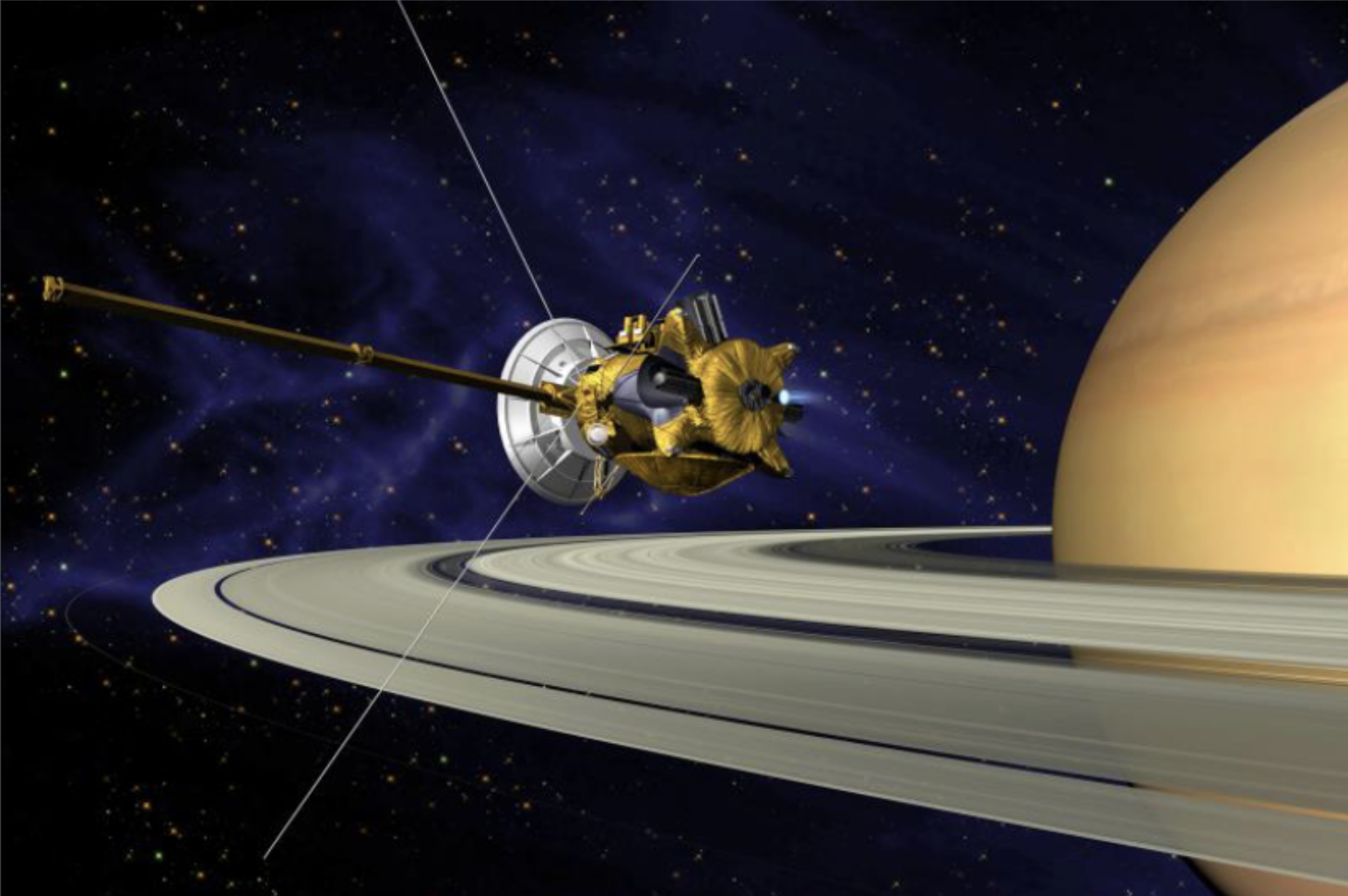
What was the purpose of the Huygens probe?
What it is:
Probe carried by Cassini.
Purpose/Goal:
Land on Titan and study it.
Key Discoveries:
Evidence of liquid activity/”Earth-like” surface:
Methane lakes
water ice pebbles
liquid streams and channels
riverbeds
The “liquid” is not water, it’s liquid methane and ethane

Describe Jupiter’s atmosphere?
Composition:
mostly Hydrogen and a little helium, the rest consists of ammonia, methane, and water vapor.
Layers:
Ammonia ice clouds (top)
ammonium hydrosulfide (middle)
water ice (bottom).
Appearance:
lower redish belts and higher light colored zones
Weather:
Super strong winds
Hurricane-like storms (cyclones)
Major Features:
THICK
COLORFUL BANDS
GREAT RED SPOT
CYCLONES
FAST WINDS
DIFFERENTIAL ROTATION (Equator spins faster than the poles)
STRONG MAGNETIC FEILD= AURORAS
What’s the difference between belts and zones on Jupiter?
Belts:
Darker, warmer, sinking gas regions.
Zones:
Lighter, cooler, rising gas regions.
Cause:
Opposite circulation patterns from convection and rotation.
What is the Great Red Spot?
What it is:
A massive, hurricane-like storm on Jupiter.
Caused by:
Jupiters fast differential rotation+heat from inside jupiter
Duration:
Has persisted for over 300 years.
What happened when Comet Shoemaker-Levy 9 encountered Jupiter?
Event:
Broken apart by jupiters strong TIDAL FORCES/GRAVITY (not magnetic field)
impacted Jupiter in 1994 and left impact scars
Why its important:
proves that even low-density objects cause major damage to jupiter
What is Jupiter’s internal structure like?
Made of mostly hydrogen and Helium
has a rocky metal core thats spread out, not solid.
RADIATES MORE HEAT THAN IT RECIEVES FROM THE SUN
How strong is Jupiter’s magnetosphere and what causes its auroras?
Magnetosphere:
Strongest in solar system; extends millions of km.
Auroras:
Caused by charged particles from Io’s volcanoes interacting with Jupiter’s magnetic field.
How do Jupiter’s tidal forces affect its moons?
Effect:
Jupiter’s tidal forces heat its moons internally, driving volcanism and keeping liquid water beneath icy surfaces.
Results:
Io’s volcanism; Europa’s liquid ocean beneath ice.
What makes Jupiter’s Galilean moon/satellite Io the most volcanically active body in the Solar System?
Cause:
TIDAL FORCES from Jupiter, Europa, and Ganymede’s GRAVITY pull on Io, heating its crust and causing volcanoes.
This leads to:
Lava lakes, VOLCANOES, no craters, sulfur compounds from volcanic erruptions that give Io its Black/gray/yellow/orange color
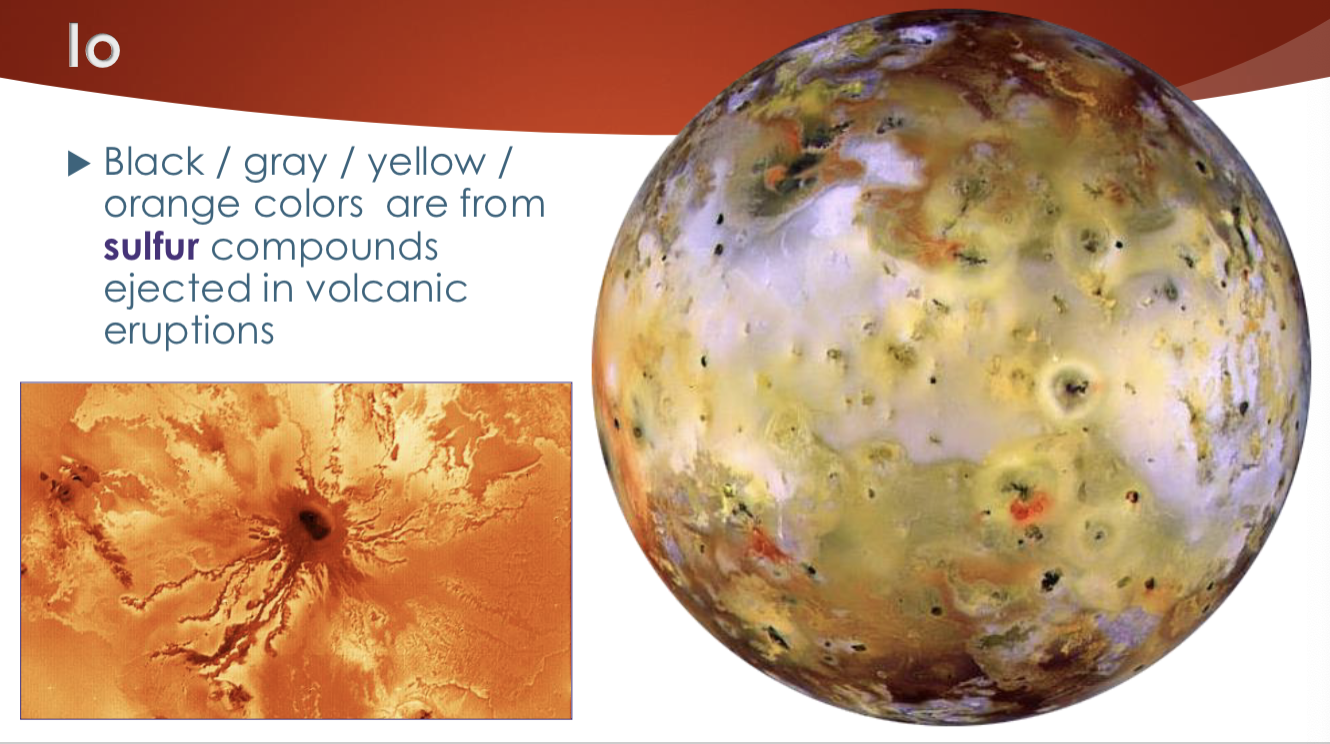
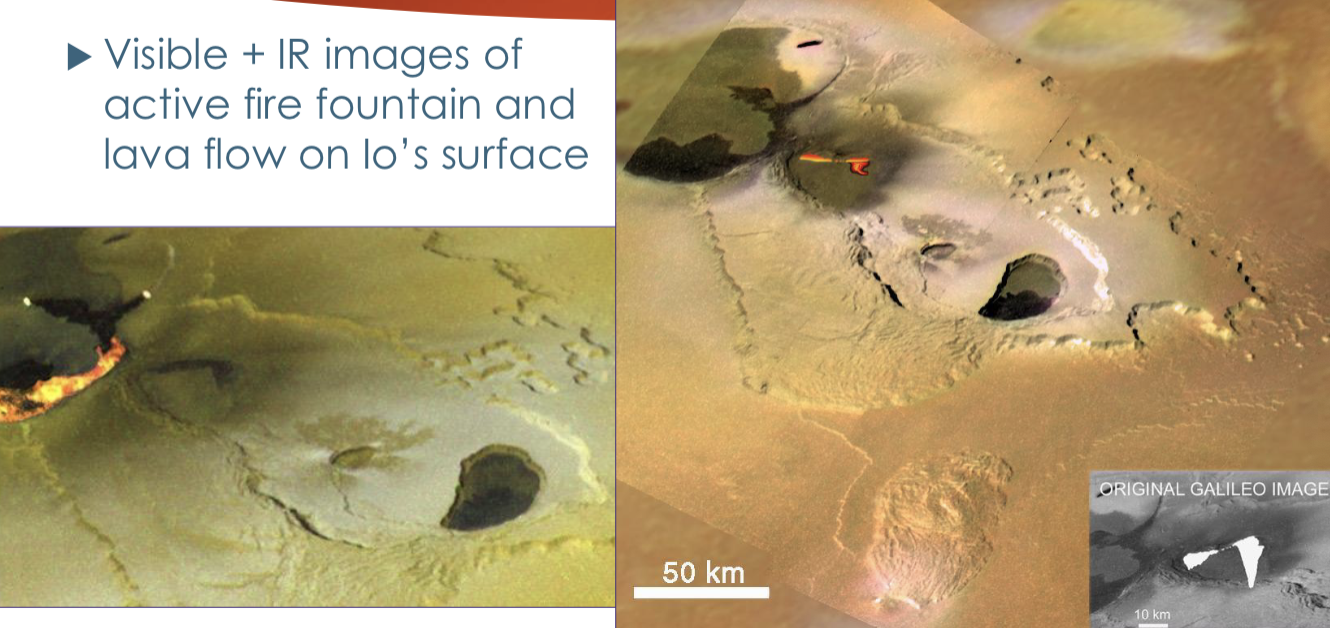
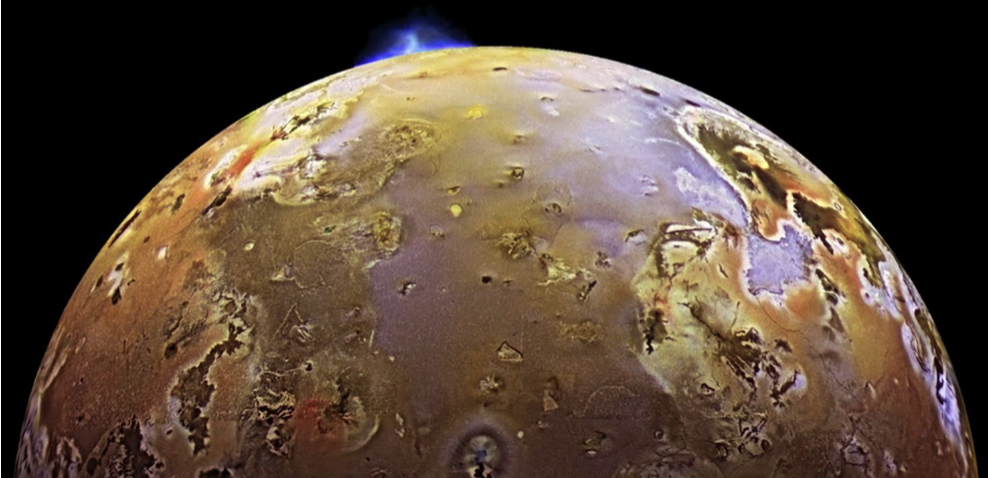
What evidence suggests Jupiter’s Galilean moon/satellite Europa has a subsurface ocean?
Cracks, ridges, "chaos terrain”, Pull-apart terrain likely due to ocean below moving the icy crust
Galilieo Spacecraft found changes in europas magnetic feild, suggests a salty ocean beneath the ice
Few impact craters- due to constant resufacing of liquid rising from below
Hubble spacecraft detected water vapor plumes errupting
Extra!: Europa is the SMALLEST GALLILEAN SATELLITE
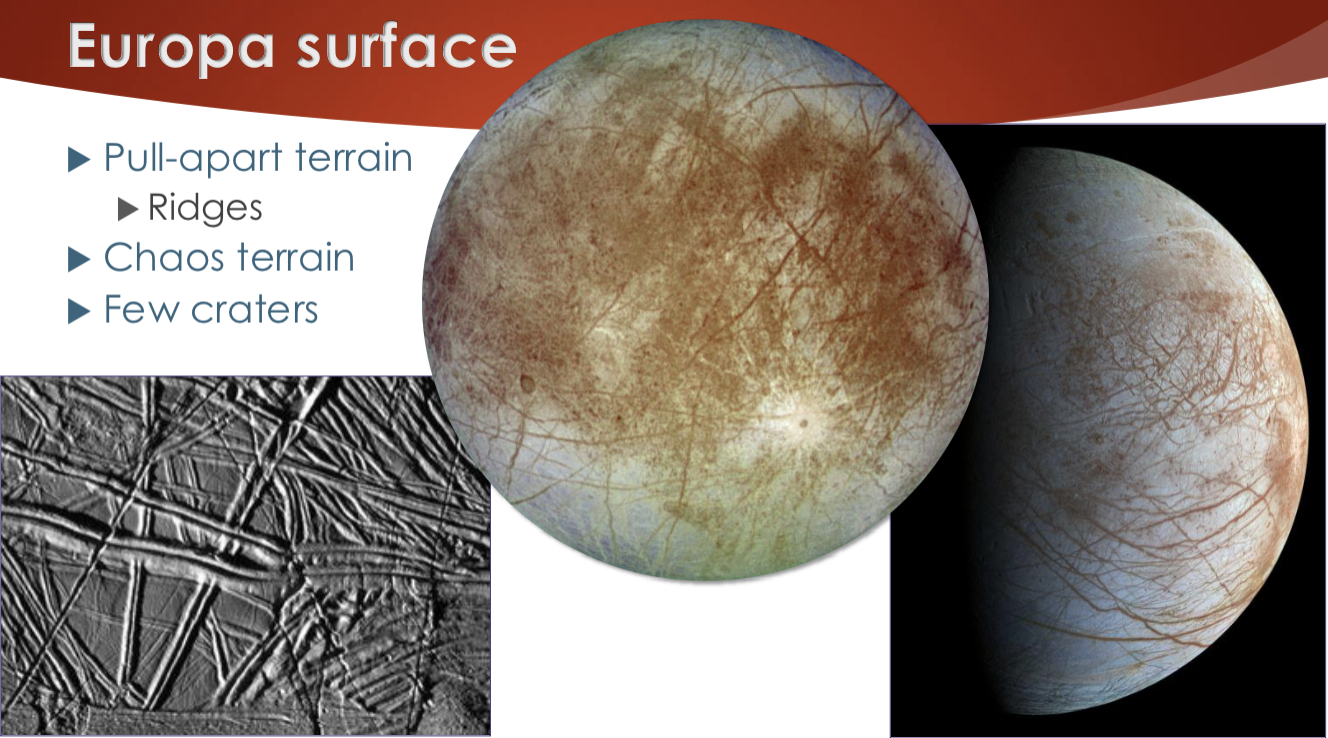
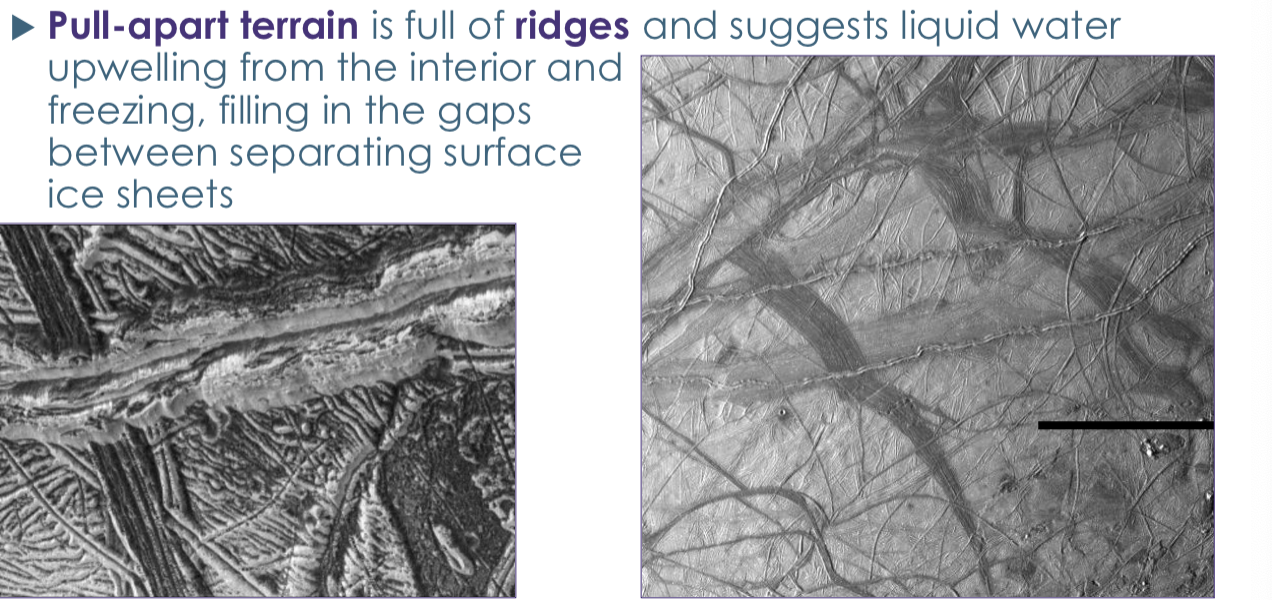
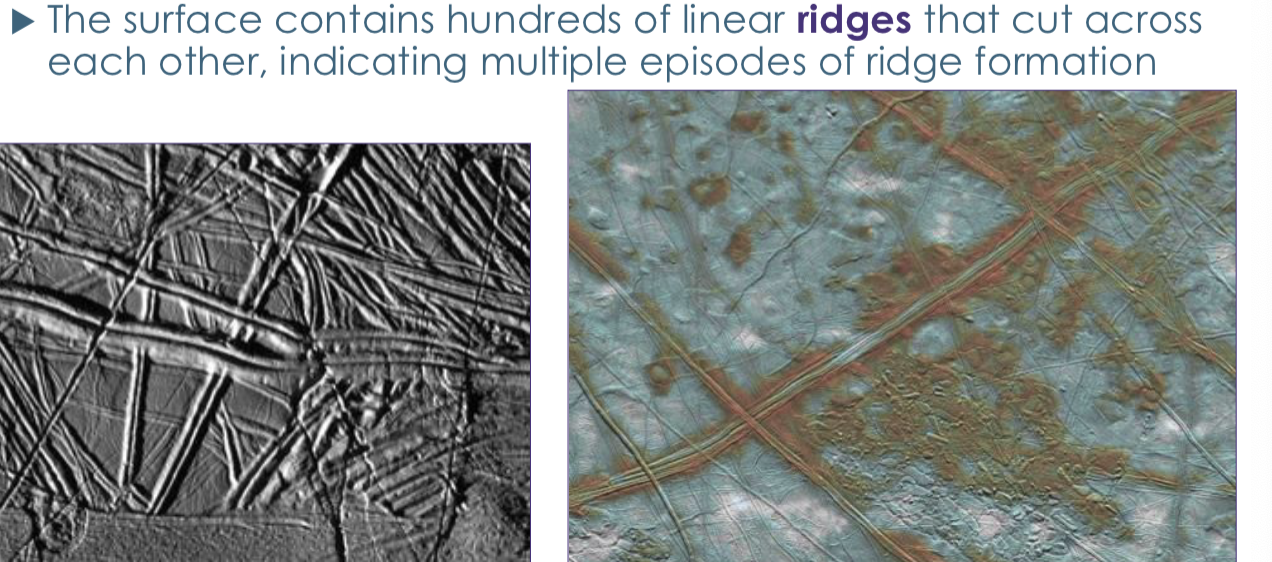
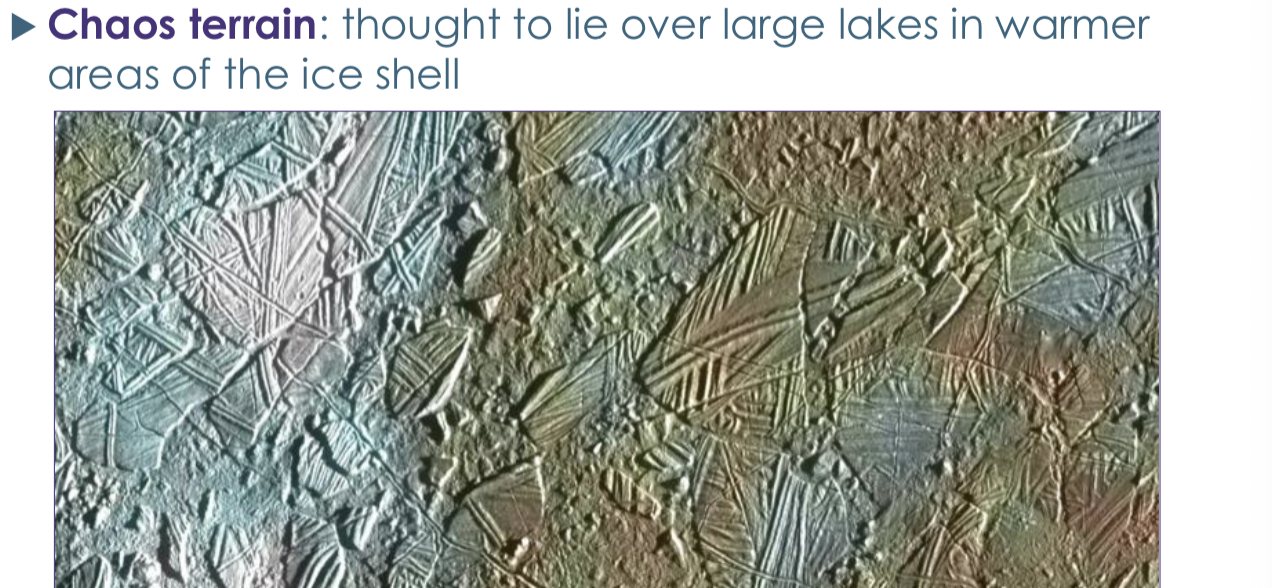
What is special about jupiters gallilean moon/satellite Ganymede? what are some key features?
Unique:
Only moon to have a magnetic field.
Largest moon in the solar system
Key Features:
“GROOVY GANYMEDE”-—>Grooved terrain: Parallel ridges and valleys caused by tectonic stretching of the icy crust.
Dark older regions: Older areas that show ancient impacts.
white younger icy regions: Younger ice areas with fewer craters.
Dark + White = Mixed terrain
Ice-rich surface: Reflective and smooth in places due to water ice.
Auroras from its magnetic feild

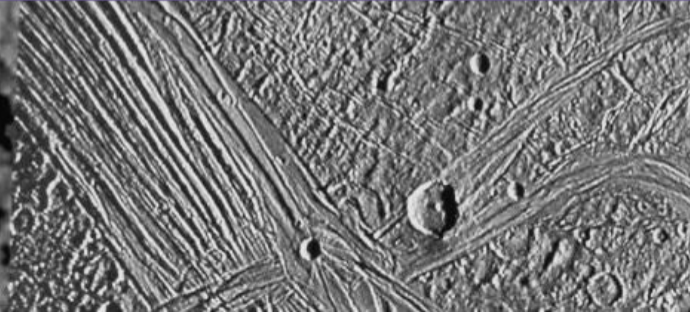
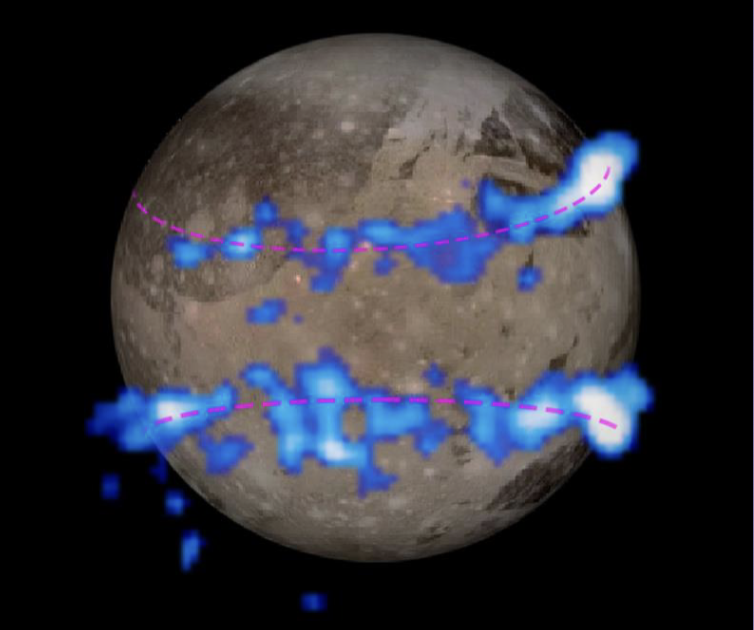
What are the main characteristics of Callisto?
Surface Features:
the most heavily cratered object in the solar system
Major Feature:
Valhalla Basin— largest multiring impact crater in the solar system
Remember: the “o” in Calisto is shaped like a multiring crater (Valhalla Basin)
Interior:
Least geologically active of the Galilean moons.
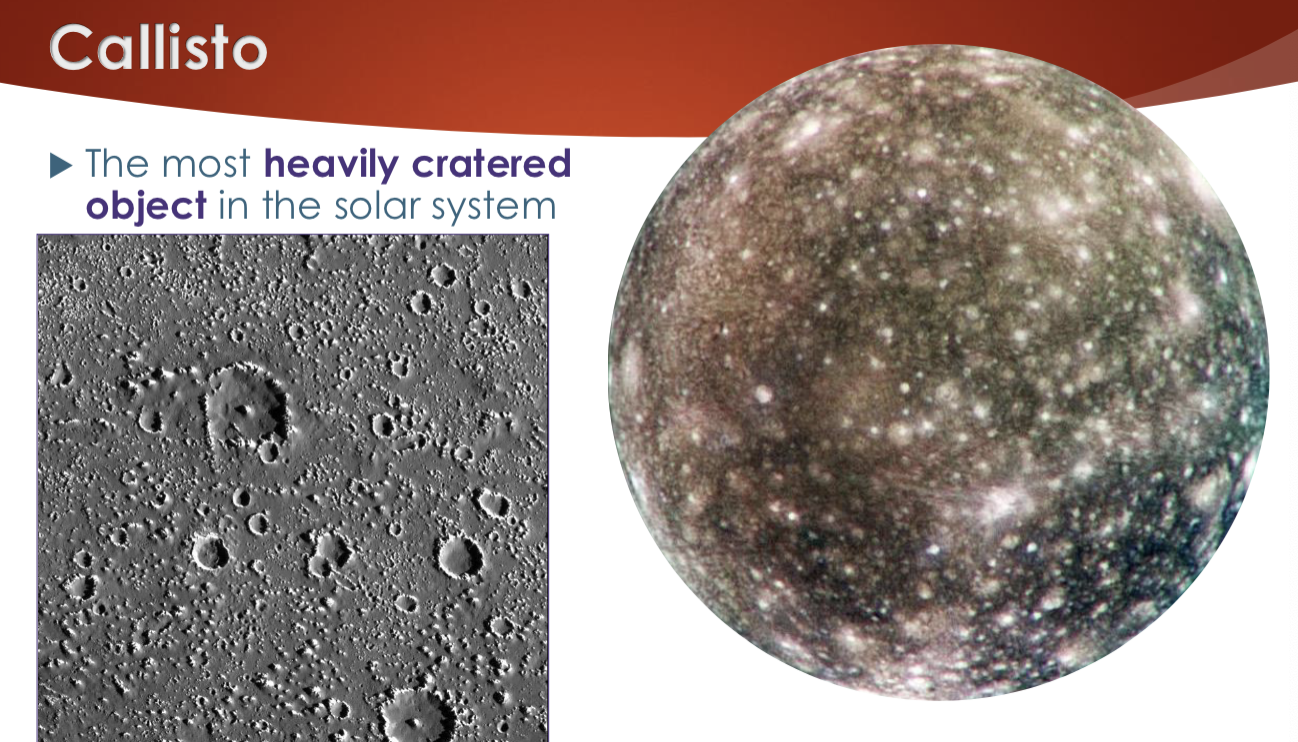

What are key features of Saturn’s atmosphere?
Composition:
Hydrogen, helium, ammonia.
Features:
Bands and storms, but more muted than Jupiter’s.
Special:
North pole hexagon and polar vortex.
What are Saturn’s rings made of and why do they exist?
Composition:
Ice and rock particles.
Cassini Division:
Gap caused by gravitational interactions with moons.
Reason for Rings Existence:
Comets, astroids, and moons shattered because they went through Saturn’s ROCHE LIMIT, the shattered pieces make up saturns rings.
What are shepherd moons and what do they do?
Definition:
Small moons that orbit near ring edges.
Purpose:
Use gravity to keep ring particles contained and sharp-edged.
What are Titan’s most notable features?
Atmosphere:
Thick, nitrogen-rich; contains methane.
Surface:
Lakes and rivers of liquid methane/ethane.
Weather:
Methane rain and storms.
What is Mimas known for?
Surface Feature:
Herschel crater (“Death Star” appearance).
Interior:
Likely icy with a rocky core.
What makes Enceladus one of the most interesting moons of Saturn?
Surface Features:
Tiger stripes near south pole.
Activity:
Water geysers ejecting from subsurface ocean.
Rings:
Source of Saturn’s E ring.
What is unique about Iapetus’s shape and appearance?
Feature:
Equatorial ridge dividing bright and dark hemispheres.
Appearance:
Walnut-shaped with stark color contrast.
What is unusual about Hyperion?
Texture:
Sponge-like, looks like a potato
Why it look like dat?
cus it got low density and a porous structure
Why it shaped like that?
cus its gravity sucks, its not strong enough to shape it round like all the other pretty planets

Why does Uranus have such extreme seasons and a bland appearance?
Rotational Axis:
Tilted ~98°, rotates on its side.
Seasons:
Each pole has 42 years of sunlight/darkness.
Appearance:
Featureless because of cold temperature and deep cloud layers.
What makes Neptune more dynamic than Uranus?
Winds:
Fastest in the solar system.
Storms:
Dark Spot (giant storm).
Appearance:
Deep blue color due to methane absorption.
What are the main features of Miranda, Uranus’s moon?
Surface:
Patchwork of cliffs, valleys, and ridges.
Features:
Verona Rupes — tallest known cliff in the solar system.
Formation:
Possibly reassembled from shattered pieces.
What are the key characteristics of Neptune’s largest moon Triton?
Orbit:
RETROGRADE ROTATION (opposite Neptune’s rotation)
Surface Features:
Cantaloupe terrain
Nitrogen geysers
Young Icy surface
Cryovolcanoes (Ice volcanoes)
Polar caps
Atmosphere:
VERY THIN ATMOSPHERE of nitrogen and methane
How it got there:
Probably captured from the Kuiper Belt
Jupiters Key Features?
The GREAT RED SPOT- storm that spins counter clockwise
CYCLONES - spinning storms caused by Jupiters rapid/differential rotation
THICK ATMOSPHERE: mostly hydrogen and helium with traces of methane, ammonia etc.
BELTS AND ZONES
FAST ROTATION
STRONG MAGNETOSPHERE=AURORAS AT POLES
FAINT RINGS
STUDIED BY JUNO (MWR) ORBITER
STUDIED BY GALILEO SPACECRAFT
PHOTOS CAPTURED BY VOYAGER 1
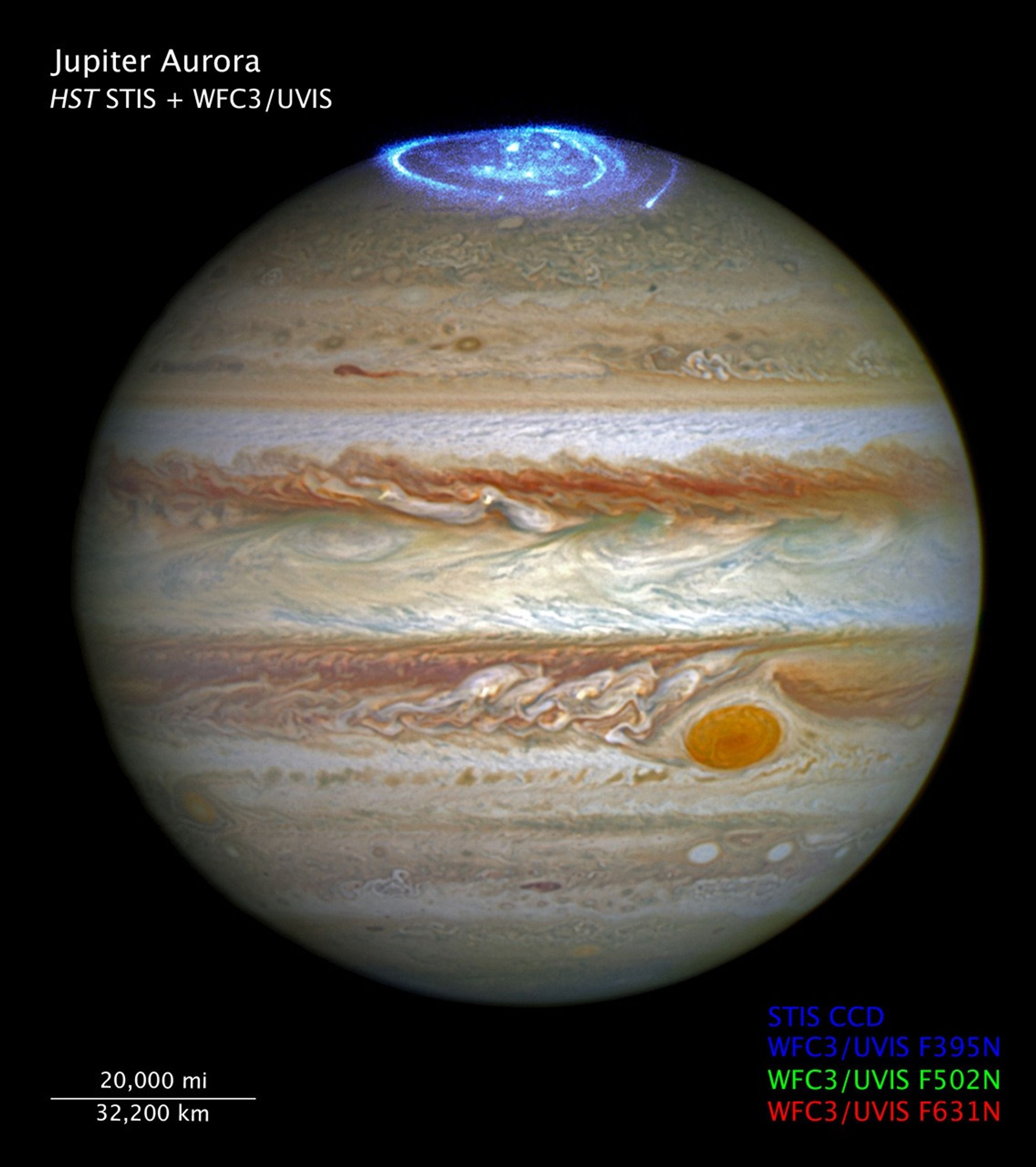
Saturns Key Features?
RINGS: Bright, wide, and made mostly of ice and rock particles.
THICK ATMOSPHERE: mostly hydrogen and helium with traces of methane, ammonia, and water vapor
HEXAGON: A giant hurricane/six-sided jet stream at the north pole.
POLAR VORTEX: powerful swirling storm at the middle of the hexagon
STRONG WINDS
LOW DENSITY: The least dense planet — it could float in water if a big enough ocean existed!
MANY MOONS: 146 known moons, including TITAN and ENCELADUS as well as Iapetus, Rhea, Dione, Tethys, Mimas, and Hyperion
SPOKES
SHEPARD MOONS
MAGNETIC FIELD: Strong but smaller and more symmetrical than Jupiter’s.
GREAT WHITE SPOT
STUDIED BY ORBITER CASSINI
PHOTOS CAPTURED BY VOYAGER 1
Uranus Key Features?
ROTATIONAL AXIS: Tilted about 98°, so it spins on its side.
EXTREME SEASONS: Each pole gets about 42 years of sunlight or darkness.
THICK ATMOSPHERE: Made of hydrogen, helium, and methane gas.
BLUE COLOR: Caused by methane absorbing red light.
FAINT RINGS: Dark, narrow rings made of rock and dust.
COLDEST PLANET IN THE SOLAR SYSTEM.
BORING FEATURELESS APPEARANCE: Few visible storms or clouds.
MOONS: Over 27 known moons, including Miranda, Ariel, Umbriel, Titania, and Oberon.
NARROW FAINT RINGS
Neptune Key Features?
STRONG WINDS: Fastest in the solar system
DARK SPOT: Giant storm system similar to Jupiter’s Great Red Spot.
DARKER BLUE COLOR: Caused by methane absorbing red light and possibly other unknown atmospheric components.
THICK ATMOSPHERE: Made mostly of hydrogen, helium, and methane.
DYNAMIC WEATHER: Constant storms, clouds, and changing patterns.
5 FAINT RINGS: 3 narrow 2 wide, thin, dark rings made of dust and ice particles.
MAGNETIC FIELD: Tilted and offset from the planet’s center.
MOONS: At least 14 known moons, including Triton, which has nitrogen geysers and a retrograde orbit.